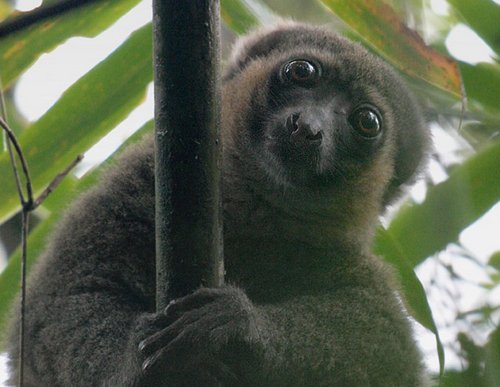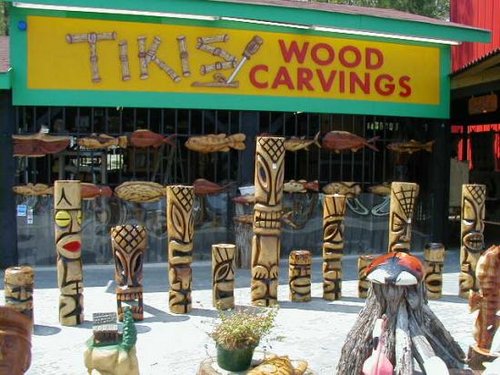Bamboo – yes, that towering evergreen that resembles a giant stick insect and famously sustains the fearsomely cute giant panda in China, the red panda in Nepal, and the spectacular Madagascan bamboo lemurs. It can grow up to 100 cm in just 24 hours: the natural world's version of a microwave dinner. The reason for this fast growth rate is that bamboo is actually a type of grass, which firstly means that it grows in abundance, making it an easily sustainable material as it grows back very quickly after harvesting.

Appreciation of bamboo's fine qualities dates far back, and it can be found as a central tenet in many ancient mythologies, including those of Malaysia, Japan and Hawaii. Indeed one of the most famous Philippine creation myths has it that the very first man, named Sicalac, and the first woman, named Sicabay, emerged out of a split bamboo stem, which rested on an island that was formed after the battle between Sky and Ocean. As creation myths go, this one is pretty peaceful, bar the battle between the sky and the ocean of course.
We also find bamboo used in various martial arts throughout South and East Asia; as a stick in the Tamil martial art of Silambam, and as Shinai swords in the Japanese Kendo to name just a few. Shinai swords are made from bamboo because of its flexible quality and were developed in the 18th century to reduce the number of Kendo practitioners being badly injured by the more dangerous bokuto – hard wooden swords that are also used in Kendo.
Because bamboo has such a high strength-to-weight ratio, it is used extensively across the world as a construction material. For over a thousand years it has been used to hold up suspension bridges in India and China. A bridge made of bamboo in the Chinese area of Qian-Xian is referenced in writing dating back to 960 AD, and may have stood for far longer – as far back as the third century BC.

An offshoot of bamboo's architectural aesthetic can be found in the States with the advent of 'Tiki culture'. Although very much influenced by the Central Eastern Polynesian culture of Tiki, 'Tiki culture' actually arrived in the US in 1934 when a Polynesian-themed bar called Don the Beachcomber opened in Hollywood. Inspired by notions of tropical hedonism (and no doubt fuelled by one too many mai tai's), 'Tiki culture' has a pseudo-island aesthetic that includes a vast amount of bamboo material. In fact, bamboo's 'tropical' aesthetic probably has a lot to do with this post-depression era Stateside Tiki burgeoning, under which bamboo came to represent the tropical building material. You have only to look up a photo of a Hawaiian bar to see what I mean...

Whilst perusing the manifold and extensive qualities of bamboo, I came across a fairly unlikely use: bamboo bicycles! Apparently they are even becoming a trend in the United States, Asia, and Africa (I've yet to see anyone peddling a bamboo two-wheeler in London). A bamboo bike has manifold benefits; aside from the obvious eco-friendly one – transforming your already earth-happy-mobile into something worthier than Florence Nightingale – they have a high crash tolerance.
One company that makes bamboo bikes is Calfee Design, who advertise frames that transfer power efficiently, and are damage and stress resistant due to the pliable and durable nature of bamboo. Get me one! They even offer a tandem, for that romantic (for some) duo cycle trip on the world's most eco-friendly bike. Okay, so the tandem will set you back a hefty $5,695, but this bamboo thing is clearly ever-growing (literally too).

Calfee say that it requires over 40 hours of labour to build each individual frame, following a consultation with the new owner to ensure completely bespoke fitting, and making each frame unique. They smoke and heat their frames to prevent them from splitting, and finish the frame with a vapour seal just like a carbon frame. I doubt that a panda bear would be too interested in munching through a bike that has been produced by Calfee design. They go as far as to claim that their frames are “functional works of art”. But with the time, energy and care that is put into making these bikes, one would be hard-pushed to deny them this.
Bamboo construction techniques have been used in Chinese furniture making since 1000 BC. Chinese furniture design is believed to have developed independently of Western furniture despite sharing similar forms such as chairs, tables, cabinets, sofas and beds. Chinese antique furniture is traditionally made from softwoods such as bamboo, although later pieces were often made from hardwoods that were inscribed with a pattern to imitate the appearance of bamboo, or simply in the style of previous pieces made from bamboo.

In Chinese symbology, bamboo's long life makes the plant a sign of longevity. Not only does bamboo have an extensive lifespan but it very rarely blossoms. The fact that it only blossoms once in every 50 years or so – the most recent flowering was in 2006 – has led to the flowers' being seen as a sign of famine, because rats are believed to feed on the profusion of flowers, multiply, and then destroy swathes of local food supplies. Bamboo blossoms are probably not the most auspicious ones to have at your wedding.
